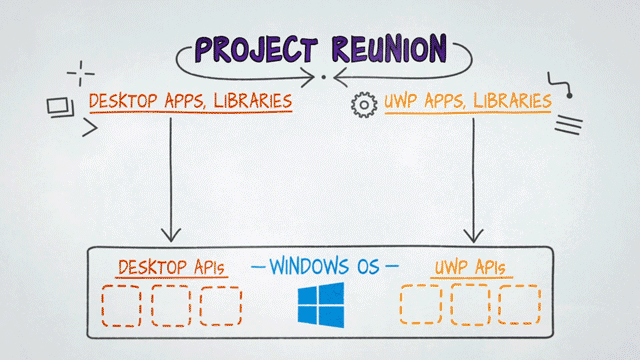At the Build 2020 conference, Microsoft announced Project Reunion, rolling its Windows desktop API and the universal windows platform (UWP) into a single package.
In its developer blog post, Microsoft defined four focus areas for app development in the coming years:
- Unify app development across the billion Windows 10 devices for all current and future apps;
- Leaning into the cloud and enabling new scenarios for Windows apps;
- Creating new opportunities for developers to build connected apps using Microsoft 365 integration in the Windows experience; and
- Making Windows great for developer productivity.
Project Reunion plays into the first point. It combines desktop app libraries and UWP libraries, given them the ability to communicate and control elements within each other. This unification enables developers to more easily create apps with better interoperability across device types. In addition, it lets developers update existing applications with new functions.
Microsoft introduced the Universal Windows Platform (UWP) in 2016 to attract developers to the then-barren Windows Store. The main goal back then was to provide a common app platform on every device that runs Windows 10. To achieve this goal, Microsoft introduced a common UWP core API that’s identical with Windows 10 devices like desktop, Xbox, IoT, and so on. Cross API compatibility is achieved through API bridges that translate UWP API calls to apps built on Android and iOS.
Win32, on the other hand, is a Windows API that exposes Windows components –Windows shell, user interface, network services and so forth–to the developer. Nearly all Windows desktop applications use Win32 to some extent.
In recent years, Microsoft has been working to add UWP into platforms that were previously incompatible. That effort eventually led to Project Reunion, finally melding the two together into a decoupled API that can be acquired through platform-agnostic package managers like NuGet.

